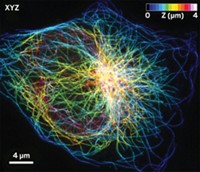Advertisement
Grab your lab coat. Let's get started
Welcome!
Welcome!
Create an account below to get 6 C&EN articles per month, receive newsletters and more - all free.
It seems this is your first time logging in online. Please enter the following information to continue.
As an ACS member you automatically get access to this site. All we need is few more details to create your reading experience.
Not you? Sign in with a different account.
Not you? Sign in with a different account.
ERROR 1
ERROR 1
ERROR 2
ERROR 2
ERROR 2
ERROR 2
ERROR 2
Password and Confirm password must match.
If you have an ACS member number, please enter it here so we can link this account to your membership. (optional)
ERROR 2
ACS values your privacy. By submitting your information, you are gaining access to C&EN and subscribing to our weekly newsletter. We use the information you provide to make your reading experience better, and we will never sell your data to third party members.
Analytical Chemistry
No Need To FRET
Metal-induced energy transfer offers resolution comparable to that achieved by FRET, a distance measuring method, but works over longer distances
by Celia Henry Arnaud
January 20, 2014
| A version of this story appeared in
Volume 92, Issue 3
F örster resonance energy transfer (FRET) is a method used to measure distances on a molecular scale. The problem with FRET, which works by transferring energy between fluorescent donor and acceptor molecules, is that it works only at distances shorter than about 10 nm. Scientists have long known that similar energy transfer occurs between fluorescent molecules and metals that quench those molecules’ fluorescence. This metal-induced energy transfer (MIET) shortens the fluorescence lifetime in a distance-dependent manner over distances as long as 200 nm, 20 times as long as FRET does. A team led by Alexey I. Chizhik and Jörg Enderlein of Georg August University, in Göttingen, Germany, has now used MIET to acquire images of live cells (Nat. Photonics. 2014, DOI: 10.1038/nphoton.2013.345). The researchers grew three types of cells on gold films, stained the cells with a membrane-specific fluorophore, and used MIET to construct a time-lapse series of images as the cells spread across the surface. Three-dimensional reconstructions of the basal cell membranes exhibited lateral resolution of 200 nm and axial resolution of 3 nm.




Join the conversation
Contact the reporter
Submit a Letter to the Editor for publication
Engage with us on Twitter